Top Surfing Destinations in the Dominican Republic
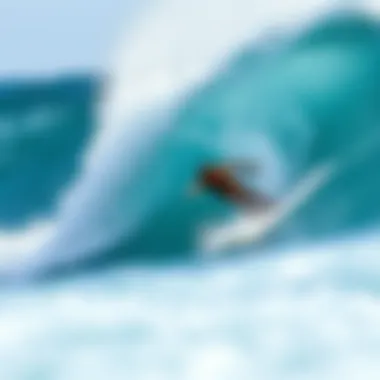
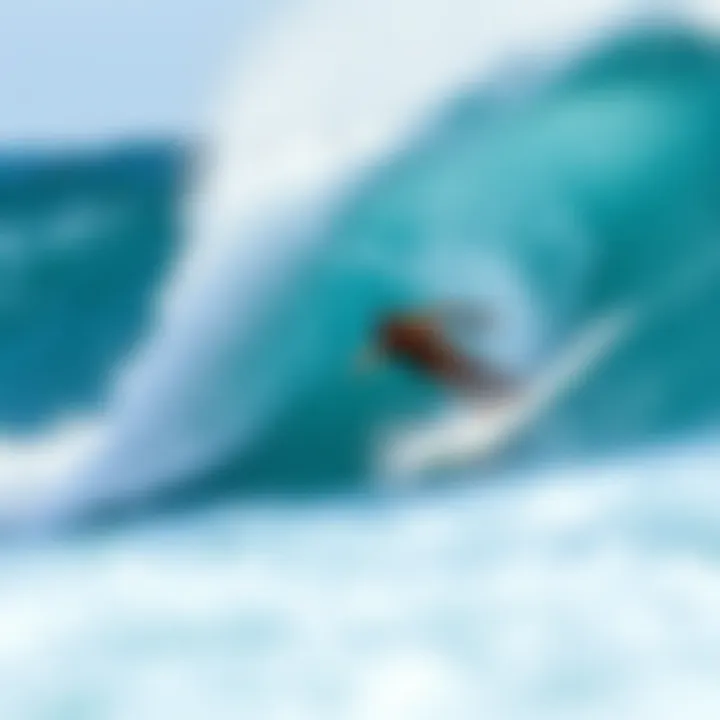
Intro
The Dominican Republic, with its sun-kissed beaches and powerful Caribbean waves, has become a haven for surfing enthusiasts. Here, in this island paradise, surfers can find an array of spots that cater to both the seasoned wave rider and the fresh-faced rookie. The vibrant culture, friendly locals, and diverse landscapes add a rich backdrop to the surfing experience. This article will guide you through the best surfing locations on the island, highlighting what makes each spot unique and providing practical tips that can help enhance your trip. From exploring the ideal wave conditions to understanding the local surfing community, you’ll gain insights into how to make the most out of your surf journey in this tropical gem.
Gear and Equipment
When embarking on your surfing adventure, having the right gear is half the battle won. The Dominican Republic has its own flavors when it comes to surf equipment, influenced by the local environment and surf culture.
Latest Surfboard Technologies
Surfboards have significantly evolved over the years. Today, materials like epoxy have become popular thanks to their lightweight yet durable properties. Many surfers in the Dominican opt for shorter boards to maneuver quickly across the often fast waves found here. Brands like Channel Islands and Firewire are leading in offering progressive board designs that allow for greater control and performance.
Additionally, many local shops carry eco-friendly boards made from sustainable materials, combining innovation with environmental mindfulness. If you’re planning to rent, check out places like Kite Club Cabarete or Surfbreak Cabarete to find a selection suited to your skill level and surf style.
Essential Accessories for Every Surfer
Accessories play a crucial role in ensuring comfort and safety when hitting the waves. Let’s break down some of the essential items:
- Leash: A good quality leash connects you to your surfboard, preventing it from drifting away during wipeouts.
- Wetsuit: Depending on the season, a wetsuit may be necessary. The waters can get chilly, primarily in the winter months.
- Wax: A slippery board is no good! Make sure you have wax to keep your footing secure while surfing.
- Sunscreen: It’s easy to overlook, but given the intense sun exposure in the Dominican Republic, a high SPF water-resistant sunscreen is essential.
"Good gear doesn’t just enhance performance; it keeps you safe and comfortable while you ride the waves."
Surf Techniques and Skills
Mastering techniques is what transforms a novice into an adept surfer. The practices you adopt will significantly influence your success on the water.
Beginner Surfing Techniques
For those new to surfing, here are a few foundational skills to consider:
- Paddling: Develop your paddling technique. Great paddling will help you catch those waves early.
- Pop-up: Practice popping up from your stomach to your feet in one smooth motion. This transition is crucial in catching waves effectively.
- Riding the Whitewater: Start with riding small, broken waves. It’s an excellent way to build confidence without the pressure of navigating larger swells.
Advanced Maneuvers for Experienced Surfers
For the more seasoned surfers, mastering advanced techniques can elevate your ride:
- Carving: Making smooth, controlled turns can help you navigate waves more effectively and add style to your runs.
- Aerials: Leaving the wave and launching into the air can be a crowd-pleaser when executed well. This requires excellent timing and precise board control.
- Tube Riding: The ultimate test for advanced surfers is riding inside the wave, also known as getting barreled. Not for the faint of heart!
In wrapping up this gear and techniques overview, remember that the true art of surfing involves continuous learning. The Dominican Republic's beaches offer the perfect venue to develop your skills amid stunning scenery and welcoming locals.
Prologue to Surfing in the Dominican Republic
Surfing in the Dominican Republic is more than just a sport; it is a vital part of the island's identity, intertwining culture, community, and natural beauty. From the warm Caribbean shores to the exhilarating waves crafted by ocean currents, surfing here attracts travelers looking for both adventure and serenity. This section aims to spotlight the importance of surfing in this locale, examining various aspects such as its cultural depth, the geography that nurtures excellent surfing conditions, and how these elements combine to create a unique surfing experience.
A Brief Overview of Surfing Culture
The surfing culture in the Dominican Republic has grown exponentially over the years. Once a niche hobby, it is now an activity embraced by a diverse crowd, from seasoned surfers to curious newcomers. Areas such as Cabarete and Sosúa buzz with energy, especially during peak seasons, where local surf shops and schools offer gear rentals and lessons to those eager to catch their first wave. The Dominican Way of Life encourages not only participation but also respect for the ocean and fellow surfers, creating a welcoming atmosphere.
Here, you’ll see surfers of various backgrounds sharing waves, stories, and sometimes even meals after a session. Surf competitions are organized periodically, bringing the community together and promoting local talent. Events like these offer a window into the camaraderie and passion that surrounds this sport, with locals often cheering on their friends and neighbors.
Geographical Factors Contributing to Wave Quality
To understand wave quality in the Dominican Republic, one must appreciate its diverse geographical features. Located in the Caribbean, the coastline offers a mix of sandy beaches and rugged cliffs that interact with ocean swells in unique ways.
- Strong Trade Winds: The island's position means it often benefits from consistent trade winds that help to create reliable surfable waves.
- Orientation of the Beaches: Many beaches face in different directions, meaning that while one may be flat, another could be firing. This variety allows for year-round surfing opportunities, as waves can be found in different locations depending on the wind and swell direction.
- The Coral Reefs: These natural barriers can create ideal conditions for surfing. In places like Macao Beach, the presence of coral reefs not only shapes the waves but enhances their quality, making them perfect for both beginners and experienced surfers.
The understanding of these geographical nuances not only aids surfers in selecting their ideal spots but also enriches their overall experience on the water.
"The beauty of the waves lies not just in their size, but in their ability to tell a story. Each surf session is a new chapter on the vast pages of the ocean."
In sum, the surfing landscape in the Dominican Republic is a harmonious blend of vibrant culture and ideal natural conditions. Whether you’re a rookie with a beginner's board or a pro chasing the perfect swell, the charm and thrill of the Dominican surf are hard to resist.
The Top Destinations for Surfing
When it comes to surfing in the Dominican Republic, picking the right destination can make a world of difference. Each spot boasts not just different wave conditions but also a unique vibe that caters to various skill levels and preferences. Understanding the essence of these top destinations can deeply enrich your overall surfing experience. From beginners searching for gentle swells to seasoned surfers seeking thrilling challenges, the Dominican Republic has something to offer everyone.
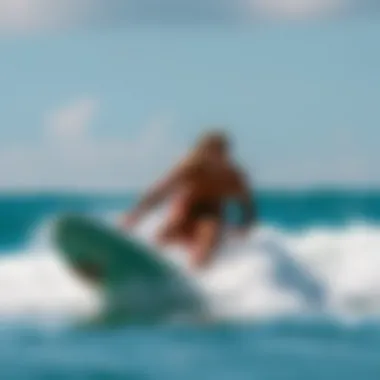
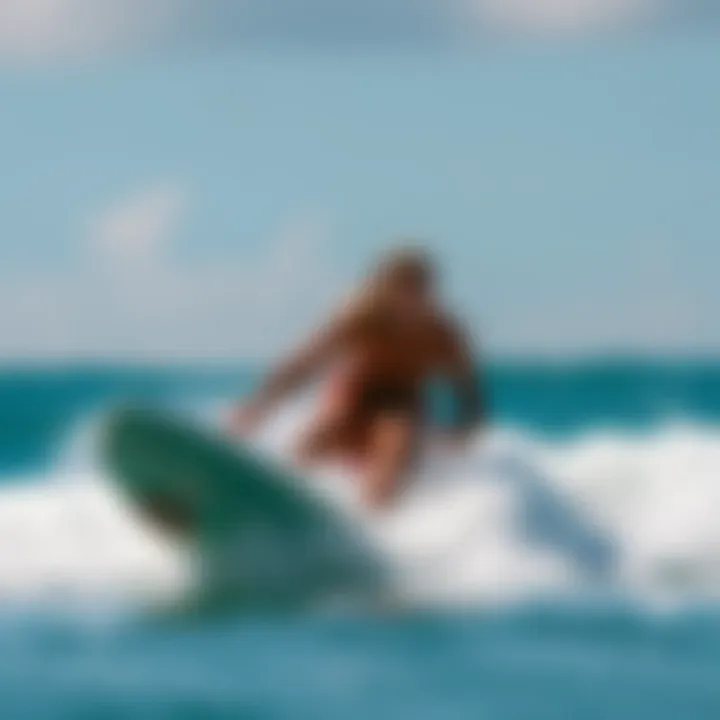
Benefits of these Destinations:
- Variety of Waves: Each location features specific wave characteristics influenced by geography, tides, and seasonal weather patterns.
- Accessibility: Many renowned surfing spots are easy to reach, making it ideal for travelers.
- Culture: Each area has its own local surfing culture, presenting an opportunity to connect with fellow surfers and learn from their experiences.
- Amenities: The presence of hotels, schools, and rentals ensures a comfortable stay and smooth surfing sessions.
- Safety: Some spots are known for their relatively safe conditions, ideal for less experienced surfers.
As we dive into the specific destinations, you’ll find reasons why they’re celebrated, what makes them stand out, and how to make the most of your time there.
Punta Cana: The Luxury Surf Experience
Punta Cana is often synonymous with high-end resorts and pristine beaches. But for surfing enthusiasts, it offers much more than just luxurious accommodations and stunning sunsets. The consistent waves make it appealing for surfers at all levels.
Located on the easternmost tip of the island, Punta Cana benefits from trade winds and ocean currents, creating excellent surf conditions. Particularly during the late summer months, surfers can expect fun, manageable swells that appeal to beginners while still providing excitement for more advanced riders.
A perk of Punta Cana is its infrastructure. Numerous surf schools, rentals, and guided tours offer seamless access to the waves. You can enjoy a day of surfing and then unwind at swank spots like the Tortuga Bay Hotel, which is alongside beautiful beaches.
Sosúa: A Hidden Gem for Enthusiasts
Nestled between lush hills and crystal-clear waters, Sosúa is often overlooked by casual travelers, yet it remains one of the best surfing spots on the island. This quaint little town provides a relaxed atmosphere and features surf breaks that are less crowded than other popular locales, making it perfect for enthusiasts who appreciate a laid-back vibe while catching waves.
The waves at Sosúa range from mellow peelers that are great for learners to more challenging breaks for savvy surfers. The best swells usually pass through from April to June, although occasional sessions can be found throughout the year.
Tip: Don’t forget to grab a local meal at one of the beachside shacks after a long day in the water; they serve some of the freshest seafood you'll ever taste.
Cabarete: The Surfing Capital
Anyone who has spent time in surfing circles knows that Cabarete is often praised as the heart of the sport in the Dominican Republic. Renowned for its vibrant surfing community and wind conditions, Cabarete attracts surfers from around the globe seeking that perfect ride.
The beaches here cater to different surfing styles, from laid-back to adrenaline-pumping. The highlight is the waves from the north coast, which carry a unique force that draws in seasoned surfers. Cabarete hosts several competitions annually, adding to its reputation as a hub for surfing enthusiasts.
Notably, the atmosphere in Cabarete is electric. The local surf schools it has are filled with passionate instructors eager to help newcomers. Plus, the nightlife in town provides a sociable end to an energetic day on the waves.
La Desembocadura: Untamed Waves
If you're looking for adventure, La Desembocadura is where you want to be. Known for its raw beauty and untamed nature, this spot presents something different compared to the more commercialized beaches. Here, the waves can be unpredictable, offering challenges even for seasoned surfers.
The powerful breaks and unique geographical features make it an adrenaline junkie’s paradise. However, it’s advisable to be aware of local conditions and consult with experienced surfers or guides before hitting the water, as the currents can be tricky.
Surrounded by breathtaking scenery, La Desembocadura allows you to escape the hustle and bustle, making every wave feel like a personal achievement.
Exploring these top destinations will not only enhance your surfing journey but also give you a taste of what makes the Dominican Republic such a beloved destination among surf enthusiasts. Each spot has its own distinct character waiting for you to discover.
Understanding Wave Seasons and Conditions
When it comes to surfing in the Dominican Republic, understanding the wave seasons and conditions is absolutely crucial. These factors not only dictate the quality of the waves but also the safety and enjoyment of surfers at all skill levels. There are several elements that can influence wave performance, including seasonal swells, tides, and wind patterns. Being aware of these conditions can greatly enhance your surfing experience, allowing you to pick the perfect time and place to catch the best waves.
Analyzing Seasonal Swells
Seasonal swells are essentially the backbone of a surf spot. They are determined primarily by oceanic and atmospheric conditions that change throughout the year. In the Dominican Republic, the swell season generally starts from November and runs through April. This period aligns with the Atlantic hurricane season, which can create larger swells, particularly on the northern coast.
For locations like Cabarete, the winter months often bring in consistent wave conditions, making it a prime time for surfers. The ideal swell size can range from three to eight feet, ideal for both beginners looking to experiment and experienced surfers aiming for the next big ride. However, not all swells are created equal—understanding the direction of the swell, whether it’s a north or northeast swell, can significantly impact the surf quality.
Here are some key points about seasonal swells:
- Fall and Winter: Typically bring larger and more consistent swells, especially from November to February.
- Spring and Summer: These seasons may have smaller, more variable swells, perfect for beginners or those looking to practice new maneuvers.
- Local Knowledge: Tap into local surf reports or engage with local surfers to gauge the best days and spots based on seasonal changes.
Tides and their Impact on Surfing
Tides can be a game changer for surf conditions. They significantly affect the size and shape of waves at various beaches. High tide could fill in the waves making them smoother, while low tide often exposes reefs or sandbars that can create sharper peaks and hollower waves.
In the Dominican Republic, understanding the tidal patterns is vital for a successful surfing outing. Each surf spot may have its own tide dynamics, making it essential to check tidal charts before heading out. Here are a few points to consider:
- High Tide: Generally offers smoother riding waves—best for beginners or longboarders.
- Low Tide: Exposes formations that can create more challenging and exciting waves—often favored by skilled surfers.
- Tide Schedules: Make it a habit to consult a reliable tide chart for local beaches to time your surf outings accordingly.
Wind Patterns and Their Effect
Wind conditions play a crucial role in the quality of the surf. Onshore winds can create bumpy waves, while offshore winds generally allow for cleaner and more organized swells. In the Dominican Republic, the trade winds typically blow from the east, making morning sessions under offshore winds the best time to surf.
Different beaches will react differently to wind conditions, so local knowledge is again invaluable. A few important aspects related to wind you should be aware of:
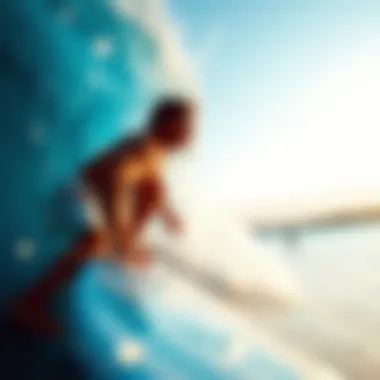
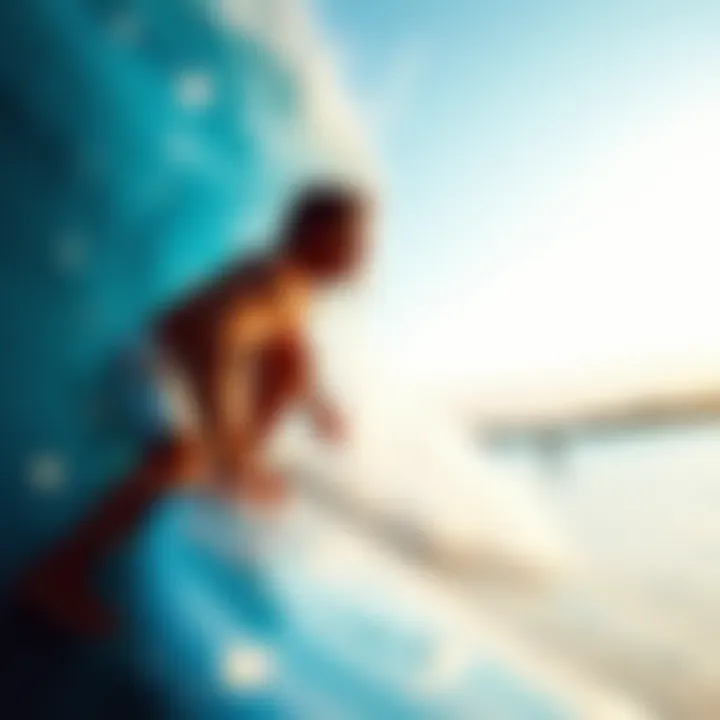
- Offshore Winds: These winds blow from land to sea and are ideal for surfing. They smoothen the waves, allowing for better shape and ride.
- Onshore Winds: When winds blow from the sea towards the land, they often lead to choppy and less favorable conditions for surfing.
- Wind Speed: Light winds can create perfect conditions, while strong gusts can be disruptive, especially for less experienced surfers.
It’s not just about the waves; understanding how they interact with tides and wind can elevate your surfing experience and ensure you ride the best waves possible.
With a better grasp on wave seasons, tides, and wind patterns, surfers can make informed decisions, maximizing their time in the water and enhancing their overall experience in the beautiful shores of the Dominican Republic. For detailed surf forecasts, you can refer to surfline.com and local surf shops for specific insights.
Accommodations for Surf Enthusiasts
Finding a comfortable place to stay is as crucial as picking the right wave. After a day of getting tossed around by nature’s force, having a cozy spot to recharge is imperative for both newcomers and seasoned surfers alike. Convenience, location, and amenities can make or break your experience while hunting the perfect swell in the Dominican Republic.
When planning a surf trip, it's essential to consider accommodations that cater specifically to surf enthusiasts. You want easy access to the surf spots, places that understand your needs, and can provide insights into the local surf conditions. Think about how nice it is to return to a welcoming atmosphere, perhaps with fellow surfers sharing stories about the day’s adventures over a cold drink.
Surf-Friendly Hotels and Guesthouses
Surf-friendly hotels and guesthouses dot the coastline, each offering unique perks tailored to wave riders. For example, establishments like Surf Camp Dominican Republic near Cabarete provide not only a comfortable bed but also organized surf lessons, gear rentals, and knowledgeable staff who can give you the lowdown on the best nearby breaks.
Common features of surf-centric accommodations might include:
- Storage for Surfboards: Secure areas for your boards make it easy to keep your gear in tip-top shape.
- Surf Packages: Many places offer inclusive packages with accommodation, meals, and surf lessons.
- Community Atmosphere: These guesthouses often attract like-minded individuals, making it simple to meet new friends.
Additionally, check out hotels like The Ocean Club in Cabarete which is a short walk from famous surf spots and provides a laid-back atmosphere that resonates with the surfing culture. You can enjoy a beachfront view right from your balcony while planning your next surf adventure.
Camping and Eco-Lodges Near Surf Spots
For those who prefer a more rugged experience, camping and eco-lodges offer a unique alternative. Imagine waking up to the sound of crashing waves just steps from your tent. Eco-lodges like Frequented Surf Lodge cater to eco-conscious surfers and offer stunning views while minimizing environmental impact. These lodgings typically focus on sustainability, allowing you to enjoy the coast while treading lightly on the earth.
Advantages of eco-lodges and camping include:
- Affordability: Often, staying at these places can save you a pretty penny, allowing for more cash toward surf gear.
- Close to Nature: You are genuinely immersed in the local ecosystem. Wake up to birds singing and catch sunsets that take your breath away.
- A Sense of Adventure: There’s something invigorating about sharing stories around a campfire after a day of catching waves.
Popular camping spots include El Cocotero in Punta Cana where you can meet other surfers while bonding over shared experiences. Plus, if you’re someone who enjoys solitude, pitch your tent at Playa Grande, a tendersurf spot with fewer crowds.
"No matter the type of accommodation you choose, the key aspect is to find a place that fits your surfing lifestyle, offering comfort and convenience so you can focus on what truly matters: chasing those perfect waves."
From hotel options that pamper you to eco-friendly choices that keep you grounded, the Dominican Republic has accommodations that can enhance your surf trip experience.
Essential Gear for Surfing in the Dominican Republic
When it comes to surfing in the Dominican Republic, having the right gear can make or break your experience on the waves. The Caribbean’s coastline is not just a beautiful sight; it’s home to some phenomenal surf spots that cater to different skill levels. However, the thrill of mastering a wave can easily turn daunting if you aren’t equipped with the essentials. Let's dive into each component a surfer needs to be informed about, ensuring your adventure is both safe and enjoyable.
Choosing the Right Surfboard
Your surfboard is essentially your best friend in the water. Picking the right one based on your skill level and the type of waves you’ll be riding in the Dominican Republic is crucial. There are several board types to consider:
- Shortboards: Perfect for ripping and sharp turns, suitable for experienced surfers who can handle quick maneuvers.
- Longboards: Great for beginners thanks to their stability, and they allow for a more leisurely ride, which is especially nice on smaller waves.
- Fish Boards: A good middle-ground option, fish boards provide extra flotation with a shorter profile, making them versatile enough for varying conditions.
Factors like the wave size at each location, your skill level, and personal preference should guide your decision. Always take the time to try out different boards before committing to one – after all, that’s how you figure out what works best for you.
Wetsuits: Do You Need One?
In the Dominican Republic, the water tends to warm up nicely, typically ranging in the 70s to 80s Fahrenheit—ideal for most surfing enthusiasts. However, during cooler months or early morning sessions, you might find yourself wondering if you need a wetsuit. Here’s what to consider:
- Water Temperature: If you plan to surf during the evening or in the winter, having a light wetsuit can help keep you comfortable.
- Protection: Wetsuits aren’t just about warmth; they also offer some level of protection against jellyfish stings or board injuries.
- Fit Matters: A well-fitting wetsuit will help you maintain body temperature while allowing for ample range of motion.
Ultimately, whether you need a wetsuit comes down to personal preference and the specific conditions at the time of your visit. If you're prone to feeling cold, it might not hurt to pack one just in case.
Accessories: Leashes, Wax, and More
Beyond the surfboard and wetsuit, you’ll want to think about accessories that enhance your safety and overall surfing experience.
- Leash: A must for keeping your board tethered to you and preventing it from becoming a hazard in the water. Always ensure it’s securely attached to your ankle.
- Wax: This little kit will keep your feet planted on the board when catching waves. There are different types of wax for varying temperatures, so choose accordingly.
- Surf Travel Bag: If you’re moving from one beach to another, a surf travel bag will protect your board from dings and scratches.
Keeping these accessories handy not only adds to your comfort but also enhances your performance in the surf. Investing in solid gear means not having to worry about preventable mishaps—allowing you to truly focus on the ride ahead.
"Without the right gear, the waves might feel a bit more daunting than they should."
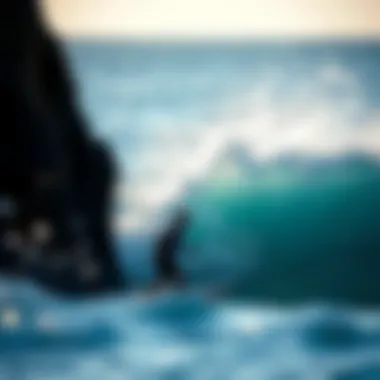
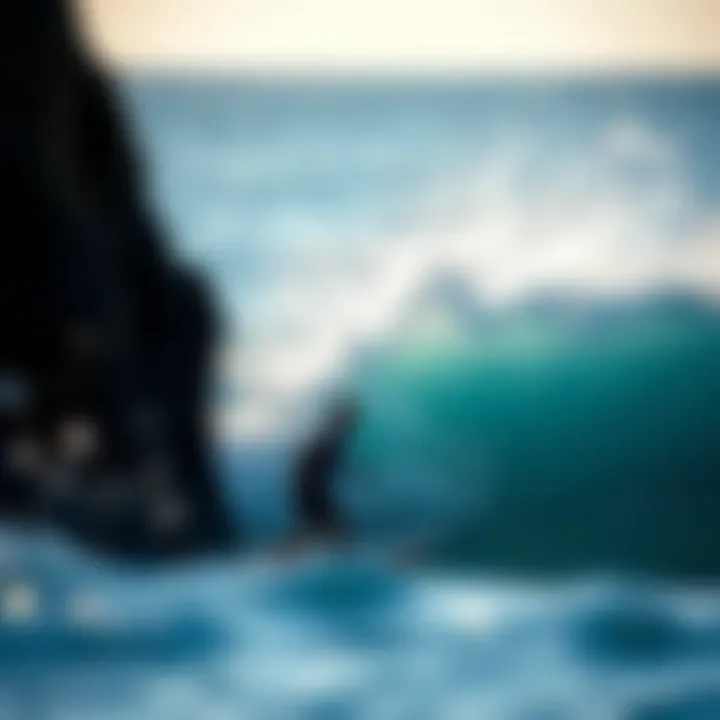
By arming yourself with the right tools, you’ll find that the Dominican Republic’s surfing landscape transforms into a playground where both novices and pros can thrive.
Cultural Considerations for Travelers
When setting out to ride the waves in the Dominican Republic, understanding the cultural landscape is just as crucial as mastering the surf. The island’s vibrant culture is rooted in a mix of Taino, African, and European influences, shaping not only the way locals interact with each other but also how they perceive visitors. Respecting these cultural nuances enriches your experience and fosters positive relationships with local surfers and the community at large.
Interacting with Local Surfers
The sea is an equalizer among enthusiasts, yet the local surf scene in the Dominican Republic holds unique dynamics. Engaging with local surfers can open doors to insider knowledge about the best surf spots, prevalent conditions, and even tide patterns that newer surfers might overlook. When you arrive, try to strike up conversations with the locals on the beach or at surf shops.
Consider these tips when interacting with them:
- Be Friendly and Approachable: A simple smile can go a long way. Engaging in light chit-chat shows you’re open to making connections.
- Ask Questions Respectfully: Show genuine interest in their experiences. Questions about their favorite surf spots or techniques can lead to enlightening discussions.
- Be Culturally Sensitive: Understanding local customs, such as greetings or expressions unique to the area, can make residents feel valued and appreciated.
By building rapport with local surfers, you not only gain valuable tips but may even find yourself invited to surf alongside them or participate in local gatherings.
Respecting the Surf Etiquette
Every surf community has its own set of unwritten rules, and adhering to them is vital for ensuring safety and harmony in the lineup. In the Dominican Republic, surf etiquette revolves around mutual respect for fellow surfers and local traditions. Ignoring these norms can stir tension and diminish your surfing experience.Important points to keep in mind include:
- Know Your Limits: Surfing spots cater to various skill levels. If you’re a beginner, it’s wise to choose a location that suits your experience. Staying within your comfort zone helps both you and more seasoned surfers enjoy the session.
- Priority Rules: Typically, the surfer closest to the peak of the wave has the right of way. If you're further down the line and a wave is rolling in, it’s best to let those already positioned take it.
- Communicate: A simple nod or hand signal can express intent, especially in crowded waters where a mere glance speaks volumes.
- Pick Up After Yourself: Environmental awareness is part of the surf ethos. Respecting the beach by keeping it clean not only preserves the beauty of the spot but also shows respect to those who call it home.
"Surfing is not just about riding waves; it's about sharing experiences with fellow surfers and respecting local customs."
In summary, the Dominican Republic offers bountiful opportunities for surf enthusiasts, but being aware and respectful of the culture significantly enhances your visits. Interacting thoughtfully with local surfers and adhering to etiquette allows one to sink into the authentic spirit of the area while enjoying the oceanic treasures it has to offer. Connecting deeply with the local surf community enriches not just your surf journey but your overall adventure on this beautiful island.
Safety and Environmental Awareness
Surfing, while thrilling and rewarding, poses its own set of risks and responsibilities. Understanding Safety and Environmental Awareness is crucial for anyone looking to enjoy the waves in the Dominican Republic. By prioritizing both personal safety and sustainable practices, surfers can help ensure that their experiences are enjoyable and that local ecosystems remain intact for future generations.
Understanding Local Wildlife
The waters around the Dominican Republic are teeming with life, and surfers must be astute to the various species inhabiting these aquatic spaces. Sharks, for instance, are occasionally spotted along popular surf breaks, and it's wise for surfers to familiarize themselves with the local types. Most sharks are harmless, but it's vital to understand local behaviors and habitats.
Additionally, be aware of jellyfish and their seasonal spikes, which can make a beach day painful. To mitigate encounters with local wildlife, consider:
- Surfing in groups rather than alone.
- Keeping an eye on water conditions and reports.
- Wearing protective gear if necessary.
By respecting marine life, surfers can enjoy the beauty of nature without conflict.
Managing Risks While Surfing
To embrace the thrill of riding the waves safely, it's important to acknowledge the inherent risks associated with the sport. First-time surfers should take heed of the following guidelines to manage risks effectively:
- Know Your Skill Level: Select waves that match your ability. Don’t push yourself too far too fast.
- Stay Aware of Conditions: Regularly check tidal patterns, wind conditions, and weather forecasts. Conditions can change rapidly, affecting wave size and surf safety.
- Utilize Surf Leashes: These help keep your board close, which can prevent accidents with other surfers and swimmers.
- Learn to Fall: Falling is part of surfing, and knowing how to fall correctly can reduce injuries.
"Preparation is key; the ocean respects the well-prepared and punishes the reckless."
Environmental Practices to Preserve Beaches
As surfers revel in the natural beauty of the Dominican Republic, they must also acknowledge their role in preserving it. Environmental awareness goes hand in hand with a commitment to keeping beaches clean and safe. Here are some practices every surfer should adopt:
- Participate in Clean-up Initiatives: Many local surf communities organize beach clean-ups. Joining these efforts fosters community ties while caring for the environment.
- Dispose of Waste Properly: Always carry out what you bring in. Littering not only harms wildlife but also degrades the beauty of the surf spots.
- Be Mindful of Sunscreens: Some sunscreens contain harmful chemicals that damage coral reefs. Opt for reef-safe products to protect underwater ecosystems.
- Spread the Word: Encourage fellow surfers to adopt sustainable practices. Knowledge is power, and sharing information can multiply impact.
Ending: The Allure of Surfing in the Dominican Republic
Surfing in the Dominican Republic is more than just a pastime; it offers a genuine connection with nature and local culture. As one admires the rhythmic dance of the waves, it becomes clear that this picturesque Caribbean nation has carved a niche in the hearts of surfers worldwide. The allure lies not only in the stunning coastlines but also in the experience that combines adventure, community, and a bit of local flair.
When we talk about why this region remains a prime surfing destination, several factors come into play. One significant aspect is the inherent diversity of its surfing locations. From the luxury resorts of Punta Cana to the hidden breaks in Sosúa, each spot holds a unique charm, catering to all skill levels from beginners to pros.
The waves in the Dominican Republic can be like a box of chocolates—you never know what you’re gonna get. Depending on the season, surfers might catch mellow, forgiving swells perfect for learning, or they might encounter adrenaline-pumping waves that challenge even the most seasoned riders. This variety keeps surfers coming back, always searching for that perfect ride.
Furthermore, the friendly local surf communities foster a sense of belonging and camaraderie. Engaging with native surfers opens up a world of tips and a deeper appreciation for the local surf etiquette. Visitors quickly learn that respect for the ocean, the locals, and fellow surfers increases not just their enjoyment but their safety on the water as well.
It's essential to acknowledge the environmental consciousness growing among surfers in the Dominican Republic. Many surf schools and local businesses are actively involved in initiatives to protect the coastline and marine life. This commitment to sustainability makes surfing here not only thrilling but impactful, encouraging visitors to appreciate the natural beauty while preserving it for future generations.
In summary, the Dominican Republic stands out as a surfing destination for its remarkable mix of stunning waves, vibrant culture, and dedicated surfers both local and visitors alike. The surf spots are not mere locations but embody the excitement and challenges of riding waves, creating memories that resonate long after one has left the water. Surfers, outdoor enthusiasts, and travel bloggers should definitely consider this gem as an integral part of their adventures, guaranteeing a riding experience as unforgettable as the ocean itself.
"Surfing is like a dance; it’s about finding the rhythm of the waves and letting it carry you away."
For further information, check out resources like Wikipedia or Britannica for a deeper dive into surfing culture and environmental practices in diverse regions.
Start planning your surf trip to the Dominican Republic—where every wave tells a story!







